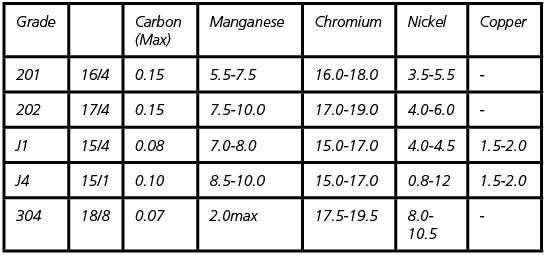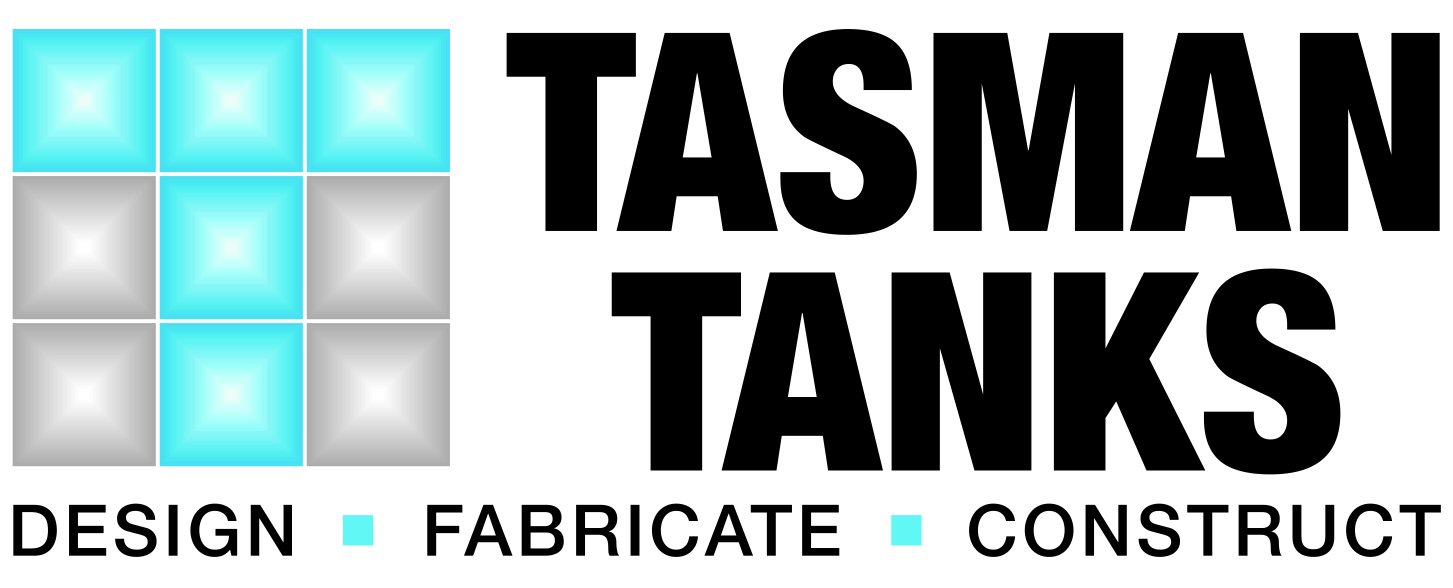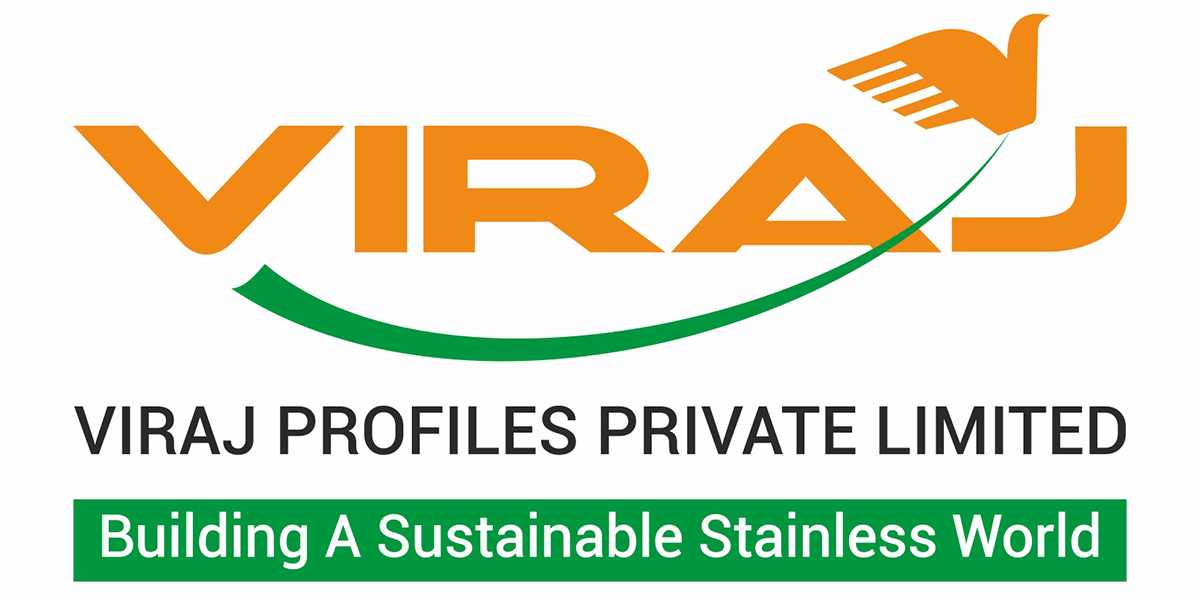
This article is the first of a two-part series outlining new and emerging stainless steel grades which may be considered as alternatives to the more traditional and widely known varieties. Read Part 2.
The growing demand from China and the rest of the developing world has driven up the price of alloying elements added to stainless steels. Over the last five years nickel prices have risen to ten times what they were.
Chromium and molybdenum have also risen strongly, and the price of stainless steel scrap – which steelmakers use extensively – has soared. Inevitably, stainless steels have also seen large price increases, with little relief in sight. Growing demand and the time required to develop new supply sources mean that nickel and other alloy prices are unlikely to drop to the levels seen a few years ago.
Higher prices are driving stainless steel users to seek more cost effective solutions: the optimum choice of grade is a blend of engineering and economic factors, and the choice may be different in a new cost environment. The most common stainless steel grade, 304, is used in about 60% of applications for stainless steel around the world. Grade 304 contains about 8% of nickel, which is used to form the ductile austenite crystal structure. Grade 316, with 10% of nickel and higher corrosion resistance given by an addition of 2% molybdenum, is also very common. It is used in marine environments. Users are seeking more cost effective alternatives to both these austenitic 300 series grades.
Austenitic 200 series, duplex stainless steels and ferritic grades can all be used instead of 304 and 316, if they are selected, designed, fabricated and used appropriately. This article and the next in the series describe the alternatives to the more traditional grades, with their abilities and limitations.
The alloying elements in stainless steel contributing most to corrosion resistance are chromium and molybdenum. Within each of the alternative groups there are grades with different corrosion resistance resulting from the chromium and molybdenum contents.
The well known austenitic 300 series grades contain the highest levels of nickel. The austenitic 200 series grades contain less nickel, and manganese is added to make the austenite crystal structure form. Because the 200 series grades have the austenitic crystal structure their mechanical and fabrication properties are similar to the familiar 300 series.
Ferritic grades have the same crystal structure as carbon steel, and have similar mechanical and fabrication properties and do not contain a nickel addition.
Duplex grades are not fully austenitic. They are formulated to be a mixture of equal amounts of austenitic and ferritic grains in the microstructure, which generally means the nickel content is about half of that in an austenitic grade of the same chromium content.
AUSTENITIC 200 SERIES
These grades are austenitic despite their lower nickel because they have more manganese. Manganese is about half as effective in forming austenite as nickel, so for every 1% of nickel left out, about 2% of manganese has to be added – at the same level of chromium, which suppresses the formation of austenite. Half the nickel in these grades has been replaced by manganese and the price of manganese is also rising strongly.
First developed in the 1930s, most of the common 200 series grades have corrosion resistance similar to the ferritic grade 430, lower than grade 304, because the chromium content is lower. Newer Indian developments (grades J1 & J4 in the table) have centered on grades with significantly lower corrosion resistance. There are other proprietary 200 series grades with higher chromium contents used in marine and anti–galling applications.
The austenitic 200 series are the closest in behaviour to the 300 series of the alternative groups. Hence they are the easiest to convert to.
Mechanical and Physical Properties
The tensile strength of common 200 grades exceeds 600MPa, i.e. about 20% higher than 304. The 0.2% proof stress is more than 20% greater than that of 304 but the elongation at fracture is similar. In contrast with carbon steel, all the austenitic stainless steel grades have tensile strengths at least double the 0.2% proof stress, a consequence of their high rate of work hardening. Some newer grades include copper to reduce this. Because of the austenitic microstructure of annealed 200 series grades they are ductile down to cryogenic temperatures and do not suffer brittle fracture. In comparison with the physical properties of 304, the 200 series have very similar density, elastic modulus, electrical and thermal properties.
Some 200 series grades in comparison to 304

Attributes
The ductility and formability are similar to the 300 grades although the lower nickel gives a greater risk of delayed cracking after heavy cold forming. Welding is similar to the 300 series grades although the 200 grades may have higher carbon and may suffer sensitisation (loss of intergranular corrosion resistance) if welded in sections thicker than 5 mm. Stress corrosion cracking resistance is similar to the 300 series. Like 304 and 316, 200 series grades do not respond to a magnet when in the annealed condition, but become magnetic after cold work.
Limitations
The lower chromium levels mean that the 15% chromium grades have lower corrosion resistance than ferritic grade 430. Even the 16 & 17% chromium grades are somewhat inferior to 304 in corrosion resistance, since it appears that a 200 series grade has slightly less corrosion resistance than a 300 series grade with the same chromium level. This may be due to the high levels of sulphur present in 200 series grades from some sources.
Steelmakers do not want 200 series scrap mixed with 300 series scrap as the high manganese levels reduce the life of steelmaking refractories. Batches of 300 series scrap suspected of being contaminated with 200 series are likely to attract only the much lower 200 series scrap price. Hence strict segregation of off – cuts is required.
At present none of the 200 series grades are routinely stocked in Australia.
Applications
As with all grade groups, it is important to choose a grade with corrosion resistance adequate for the application. The lower chromium 200 series greades detailed in the table are generally suitable for use with mild acids and alkalis including most foods (pH not less than 3). They are satisfactory with 20˚C potable water and are suitable for indoor exposure – furniture, bins, etc. They are used extensively for cookware and serving bowls – applications where the corrosion conditions are not severe since the utensils are washed and dried. The formability and deep drawability of the 200 series are especially useful for these applications.
This article appeared in Australian Stainless Issue 40














